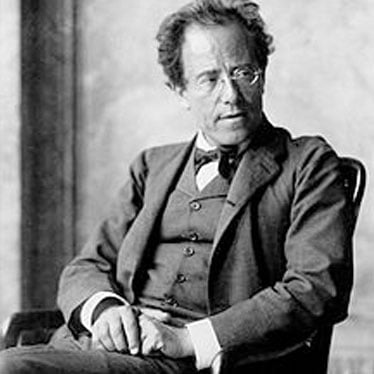
Composers and musicians of the Romantic period (1860-1920) used their art to express intense emotions. Looking toward nature, literature, and the visual arts for inspiration, the music created during this time would go on to influence later musicians with its exploration of richer harmonies and less concern with previous music disciplines. One such composer and conductor, Gustav Mahler, lived during the latter part of the Romantic era. His fascinating life led to his development of important compositions that were banned for over 50 years in Europe during the Second World War. However, Mahler was eventually regarded as “an important forerunner” of 20th century composition techniques, helping to usher in the modern era.
The following facts about the life and works of Gustav Mahler are gleaned from the biographical information contained in the encyclopedia Britannica, Gustav Mahler.eu, and other history sites.
Early Life and Influences
- Mahler was born in Kalischt, Bohemia, in what was then Austria-Hungary (Austro-Hungarian Empire), and which is now located in an area that is part of the Czech Republic.
- Fascinated with both the military and folk music that he had heard since birth, at age four, Mahler started reproducing and composing music on the accordion and piano.
- As an Austrian, German-speaking Jew, he experienced racial discrimination at an early age.
- His father was self-educated, but Mahler’s mother was part of the cultured society. As a result, the domestic tension in Mahler’s home manifested into his father's physical abuse of his delicate mother.
- Mahler “unconsciously adopted” a slight limp, mimicking his mother’s “lameness.”
- Mahler inherited a weak heart from his mother.
- He had all the makings of a child prodigy, and his first performance was at the age of 10, playing piano in Jihlava.
- By age 15, he was accepted to the Vienna Conservatory and earned his diploma.
- Although he was awarded a number of piano and composition prizes, when he did not earn the prestigious Beethoven Prize for composition, he focused on conducting as a means of lucrative employment.
Conducting and Composition Career
- Over the next 17 years, Mahler worked his way up from small European opera houses to becoming the Artistic Director of the Vienna Court Opera, in 1897.
- His musical expressions are considered autobiographical, based on his personal outlook on life.
- Gustav Mahler’s composition career is divided into three “creative” periods, each of which produced a “symphonic trilogy.”
- During the first creative period, his three symphonies were widely diverse. Symphony No. 1 in D Major (1888), contained four movements, the fifth one being discarded, and is widely accepted as an autobiography of his life. The joyous beginning is followed by “The Funeral March in the Manner of Callot,” and ends with a brilliant finale.
- Mahler’s Symphony No. 2 (1894) is popularly known as Resurrection. It starts with death and ends with a celebration of immortality.
- Symphony No. 3 in D Major (1896), presents a “Dionysian vision of a great chain of being” in six movements.
- He married Alma Maria Schindler in 1902, and had two daughters.
- During his middle creative period, (1897-1907), his reputation as a conductor was firmly established, and he created five symphonies including: Ode to Heavenly Joy, Giant, No. 6 in A Minor, Song of the Night, and No. 8 in E Flat Major.
- He identified three personal “blows” in his tragic symphony, No.6: His forced resignation at the Vienna Opera, the death of his three-year-old daughter, and his diagnosis of heart disease.
- At age 47, Gustav Mahler directed performances at the Metropolitan Opera in the U.S. and became the conductor of the Philharmonic Society of New York.
- A childhood background of illness and death among his 13 brothers and sisters, combined with the racial prejudice he dealt with may explain the bitterness expressed in his last three symphonies.
- He never heard the works of his last-period trilogy performed, passing away in 1911 while composing Symphony No. 10.
- Although no version can be called complete, research on No. 10, in 1960, led to the finalization of that piece.
Personal Facts
- Mahler was known to suffer from nervous tension, skepticism, and an obsession with death.
- He was an avid swimmer and mountain “walker.”
- Mahler converted to Christianity in 1897; his symphonies largely reflect the tenets and themes of that faith.
- There is an International Gustav Mahler Society, headquartered in Vienna, designed to promote research and scholarly studies about his work and the cultural history of his era.
Gustav Mahler lived during a significant time of musical transition. As a Post-Romantic period composer and conductor, his lasting influence foreshadowed the “progressive tonality” of the 20th century, and he was truly a musician who lived his art. In later years, Nazi Germany banned famous Jewish conductors Otto Klemperer and Bruno Walter who were known for their interpretations of Mahler’s work.
To learn more about this remarkable conductor and composer, visit this site, or discover some of his powerful compositions here.


